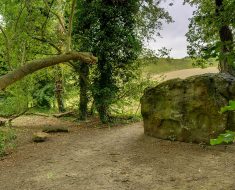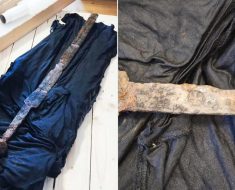In 1910, while cutting peat near the small village of Adabrock on the Isle of Lewis in the Outer Hebrides, Donald Murray stumbled upon an extraordinary archaeological discovery.
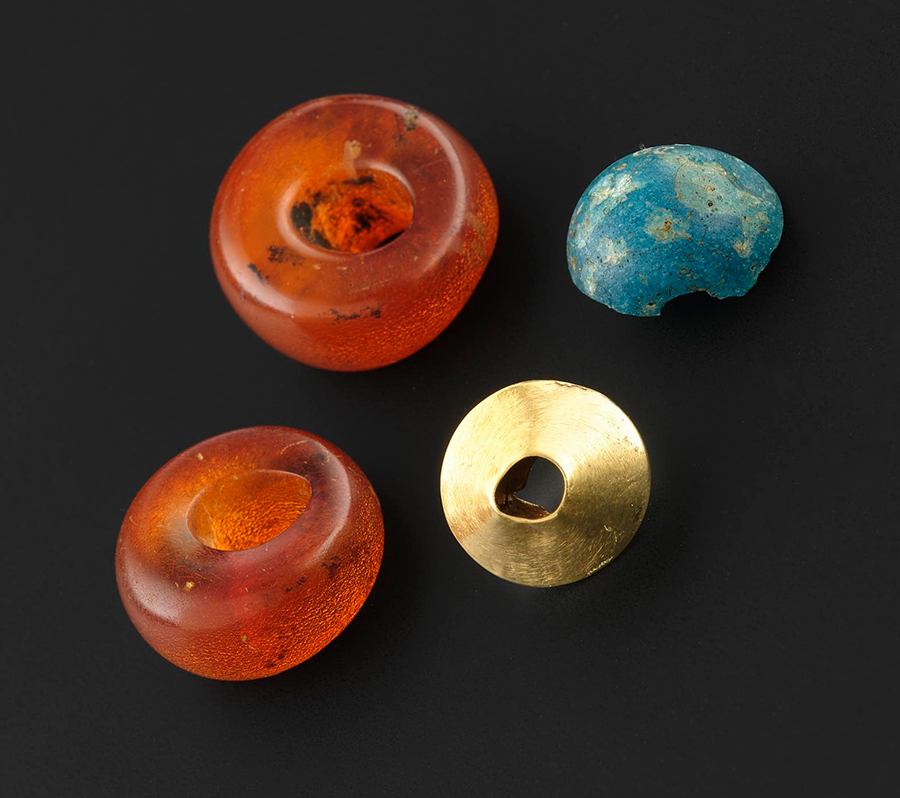
Buried in the boggy soil at a depth of nine to ten feet lay a collection of Late Bronze Age artefacts, now known as the Adabrock Hoard.
The Hoard
Dating to approximately 1000–800 BC, this hoard represents one of the most diverse and well-preserved examples of Bronze Age material culture discovered in Scotland, offering a unique insight into the technological skill, social structure, and cultural practices of prehistoric communities in the region.
The hoard’s contents are varied, reflecting both practical and ornamental aspects of Bronze Age life. Among the artefacts are several bronze tools and weapons, including two socketed axeheads, a spearhead, a gouge, a hammer, and three razors.
These items demonstrate the advanced metalworking techniques of the time. Bronze, an alloy of copper and tin, required careful smelting and casting, and the quality of the axeheads and spearhead suggests highly skilled craftsmanship.
Uses
These implements were likely used for a mixture of everyday domestic tasks, agricultural work, and warfare, indicating the dual utilitarian and ceremonial significance of such items in Bronze Age society.
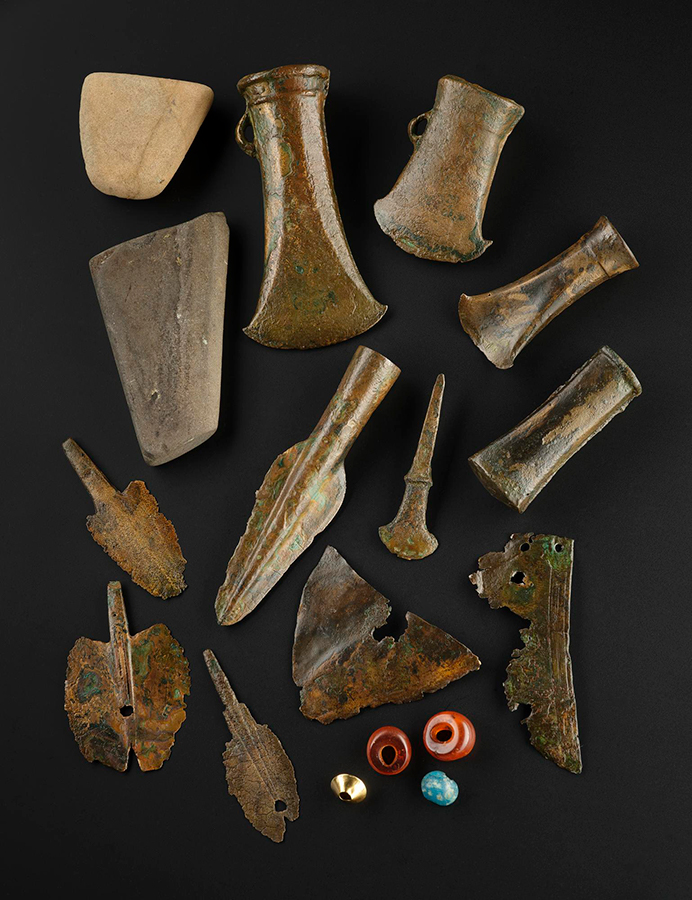
Alongside these functional objects were personal ornaments, including beads made of glass, amber, and gold. Such materials were not locally sourced, highlighting the presence of trade networks and cultural exchange between Scotland and other regions of Europe.
A Cultural Horizon
The inclusion of gold and semi-precious materials in the hoard suggests that its owner was a person of status or wealth within the community.
Decorative objects like these not only served aesthetic purposes but also conveyed social rank and possibly spiritual or ritual significance.
Among the more intriguing finds were fragments of a decorated bronze vessel, further emphasising the ceremonial aspect of the hoard. The ornamentation on these fragments points to connections with continental Europe and may reflect influences from the wider Atlantic Bronze Age, a cultural horizon encompassing parts of Britain, Ireland, France, and Spain.
This cross-cultural contact would have facilitated the exchange of ideas, technology, and artistic motifs, indicating that even remote communities in the Outer Hebrides were not entirely isolated.
High Status
Two whetstones found with the hoard demonstrate that the tools and weapons were maintained and actively used. Whetstones were essential for sharpening blades and ensuring their effectiveness, underscoring the practical utility of the artefacts alongside their symbolic value.
The combination of functional tools and high-status ornaments in a single deposition hints at a complex social or ritual purpose, rather than simple storage or accidental loss.

The circumstances of the hoard’s deposition suggest deliberate placement. Murray described the items as being “all in one group, the smaller things above and the heavier below,” indicating careful arrangement.
Such deliberate deposition may have been part of a ritual offering, a burial-related practice, or a way of safeguarding valuable items during a time of social or environmental uncertainty.
Hoarding was a recognised practice in Bronze Age Britain, often serving multiple functions, from religious observance to the assertion of ownership and status.
Bronze Age
Following its discovery, the Adabrock Hoard was excavated and later acquired by the National Museum of Antiquities of Scotland, now part of National Museums Scotland, where it is accessioned as X.DQ 211-227.
The hoard continues to be an invaluable resource for archaeologists, historians, and students of prehistoric Britain.
Its diverse contents provide rare insight into the lives of Bronze Age communities in the Scottish Highlands and islands, illustrating both the practical aspects of daily life and the symbolic, ceremonial, and social dimensions of material culture.
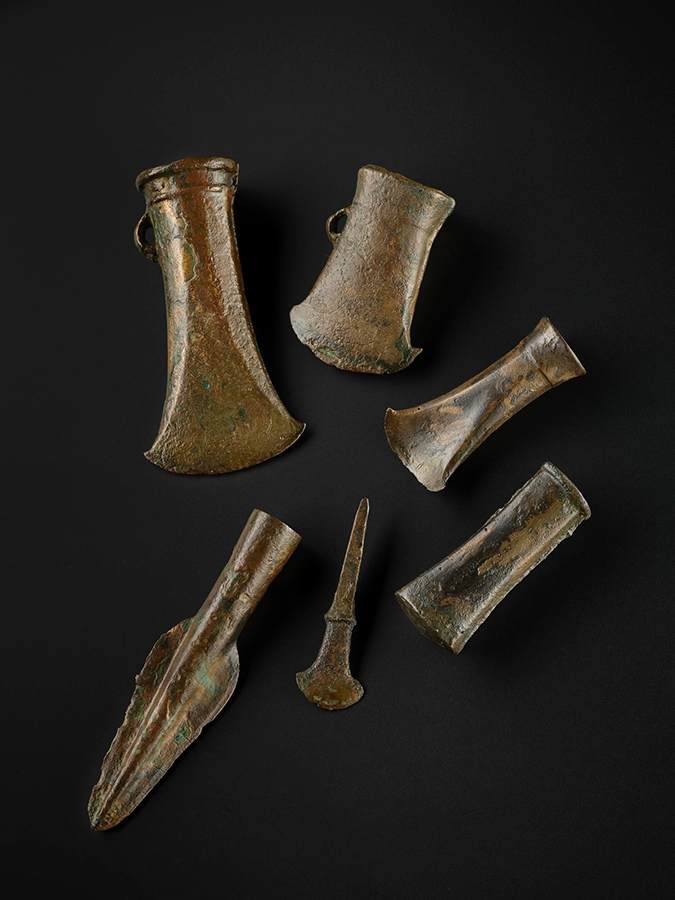
The Adabrock Hoard is not only significant for the quality and variety of its artefacts but also for what it reveals about Late Bronze Age society.
It highlights the technological capabilities of metalworkers, the social importance of personal adornment, and the networks of trade and cultural exchange extending across the Atlantic Bronze Age. Moreover, the careful deposition of the hoard points to complex ritual behaviour, suggesting that these objects carried meaning beyond their material value.
The Adabrock Hoard
Today, the hoard remains a focal point for understanding prehistoric Scotland. It demonstrates that even communities in remote areas such as the Outer Hebrides were part of broader cultural and economic systems.
The artefacts serve as tangible links to the past, allowing modern observers to appreciate the skill, artistry, and social complexity of Bronze Age people.
In sum, the Adabrock Hoard offers a rare and compelling window into life over three millennia ago. Its discovery underscores the richness of Scotland’s archaeological heritage and continues to inform our understanding of the Early and Late Bronze Age across Britain and Europe.
From practical tools to exquisite ornaments, the hoard embodies the ingenuity, artistry, and social sophistication of the prehistoric communities that inhabited the Outer Hebrides.




